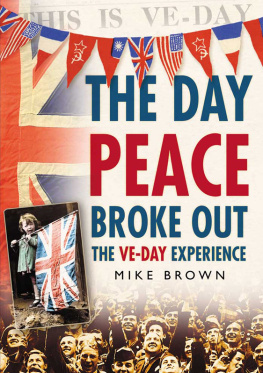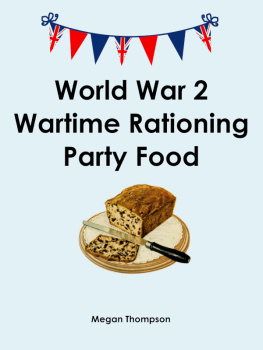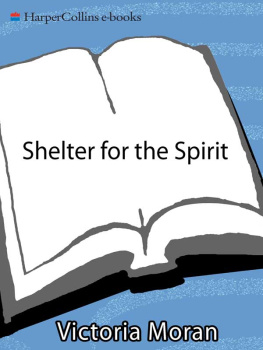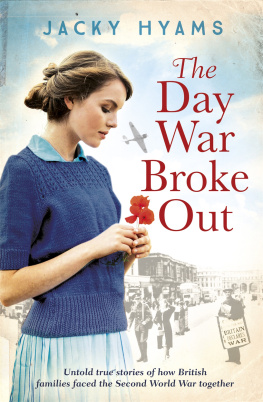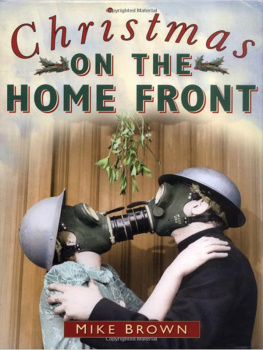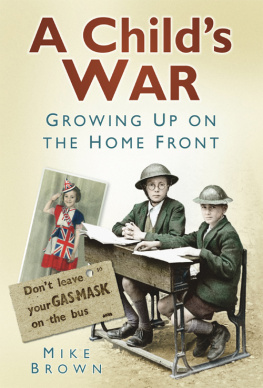THE
WARTIME HOUSE
HOME LIFE IN WARTIME BRITAIN 19391945
MIKE BROWN & CAROL HARRIS
THE HISTORY PRESS
First published in 2001 by Sutton Publishing
This paperback edition first published in 2005
Reprinted in 2007
The History Press
The Mill, Brimscombe Port
Stroud, Gloucestershire, GL 5 2 QG
www.thehistorypress.co.uk
This ebook edition first published in 2013
All rights reserved
Mike Brown and Carol Harris, 2005, 2013
The right of Mike Brown and Carol Harris, to be identified as the Author of this work has been asserted in accordance with the Copyrights, Designs and Patents Act 1988.
This ebook is copyright material and must not be copied, reproduced, transferred, distributed, leased, licensed or publicly performed or used in any way except as specifically permitted in writing by the publishers, as allowed under the terms and conditions under which it was purchased or as strictly permitted by applicable copyright law. Any unauthorised distribution or use of this text may be a direct infringement of the authors and publishers rights, and those responsible may be liable in law accordingly.
EPUB ISBN 978 0 7524 9472 2
Original typesetting by The History Press
CONTENTS
ACKNOWLEDGEMENTS
We would like to take this opportunity to thank the following people whose help has proved invaluable in the production of this book:
John Davis of Manchester Metropolitan University; Ramesh Rajadurai; Clare Bishop, Catherine Watson, Kirsty Steadman and Jonathan Falconer from Sutton Publishing; William and Ralph.
Photographs are from the following sources:
Bromley Local Studies Unit; Daily Express; Daily Mail; Design Council; Hallmark Cards (Holdings) Ltd; Geo Harrap; Imperial War Museum; Lewisham Local History Centre; Osbert Lancaster, Homes Sweet Homes (1938); John Murray (Publishers) Ltd; Odhams Press; Vinmag Archives Ltd.
CONVERSION TABLES
MONEY
The currency used during the war was, like today, based on the pound. But under the old system, known as pounds, shillings and pence, the pound was divided into 20 shillings, each of which was worth 12 pennies. An amount would be written in the form of 3 17s 10d, or three pounds, seventeen shillings and tenpence. Smaller amounts might be written in the form of 12/6d or twelve shillings and sixpence. The guinea, worth 1 1s, was rather old fashioned by the late thirties, but continued to be used for more expensive items. Items priced in guineas were therefore implicitly of better quality.
1d = 1 old penny = 0.4p
1s = 1 shilling = 5p
1gn = 1 guinea = 1.05
RELATIVE VALUE OF THE POUND
It is difficult to understand how much something was actually worth in the past. A house might cost 800 pounds in 1932, but people earned a lot less too; so, is it relatively more or less expensive than a house today? The following conversion table shows the relative value of 1 using todays values; so 1 in 1900 would be worth 55.36 today.
1900 | = | 55.39 |
1905 | = | 53.66 |
1910 | = | 50.50 |
1914 | = | 47.69 |
1918 | = | 22.01 |
1920 | = | 19.08 |
1925 | = | 26.83 |
1930 | = | 30.12 |
1935 | = | 33.02 |
1939 | = | 30.12 |
1940 | = | 26.02 |
1941 | = | 23.85 |
1942 | = | 23.85 |
1943 | = | 23.85 |
1944 | = | 23.85 |
1945 | = | 23.52 |
1950 | = | 20.44 |
Source: National Statistical Office
COOKING
Weight
1 pound = 1 lb = 453 g
lb = 227 g
pound = 113 g
1 ounce = 1 oz = 28 g
Measures
1 tablespoon = 3 teaspoons
1 tablespoon = 15 ml
1 teaspoon = 5 ml
Liquid
1 pint = 568 ml
pint = 284 ml
pint = 142 ml
The Cup
Another measure commonly used was the cup take one cupful of breadcrumbs. This referred to a standard tea-cup (not a mug). It was an approximate measure, different from the precise US measure, also called a cup.
Oven Temperatures
Most wartime recipes have oven settings that are described rather than given as a figure; for example: Bake in a moderately hot oven for fifteen minutes. The following table gives modern equivalents for these.
Description | Degrees C | Gas number |
very slow | 110120 |
slow | 140150 | |
moderate | 160180 | |
moderately hot | 190200 | |
hot | 220230 | |
very hot | | |
INTRODUCTION
One of the greatest social revolutions of the last two centuries has been the massive and rapid expansion of what we would today call the middle classes. This group had its beginnings in the freemen of feudal England, the merchants and artisans, people whose skills and intelligence enabled them to rise above the common people, without threatening the position of the ruling elite. The members of this group became the grease that allowed the wheels of society to turn smoothly. Those with ability and intelligence were plucked from the lowest rungs and put to good use in the evolving civil service, in the Church, and in commerce, running the country for those who ruled. This symbiotic relationship was nothing if not mercenary; the wealth created by the middle classes during the Industrial Revolution bought them marriages into the aristocracy, which by this time needed both money and fresh blood.
The middle classes excelled especially in the growing field of commerce, putting to good use the education that they valued so highly. So it was no coincidence that, as England became part of Great Britain, the middle classes spread throughout the towns and cities where most of that trade was conducted. This expansion was particularly obvious in the south-east of England, where much of the increasing Continental trade was based. Yet until the Industrial Revolution, the middle classes remained but a small sector of British society.
In 1867, the same year in which Karl Marxs Das Kapital was published, Dudley Baxters book National Income of the United Kingdom quantified the size and distribution of the national income. As part of this process, Baxter attempted to sort the population into a number of groups or classes, creating a system that is still recognised today. He grouped the upper class with the upper middle class to make about half a per cent of the population. Next came the middle and lower middle classes, who together made up 20 per cent. Finally, skilled, less skilled and unskilled labour, plus agricultural workers, made up the rest. So, by the second half of the nineteenth century, the middle classes had become a significant group and their numbers continued to rise.
But income was not the only identifying characteristic. Education was important, as was religion. Middle class morality, so despised by Alfred Doolittle in George Bernard Shaws play
Next page


